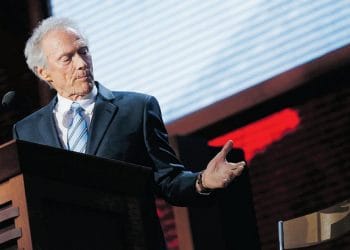“The first meme election”
The Internet watched as Democrats Barack Obama and Joe Biden squared off against Republicans Mitt Romney and Paul Ryan during the 2012 presidential election in the United States of America. Comments and actions were scrutinised and discussed on mainstream media websites, political (and personal) blogs, and social media platforms like Facebook, Twitter and Reddit.
Discussion wasn’t the only thing that was happening online. As the online community began to appropriate photos and soundbites for their own purposes, Internet memes went viral, shared from person to person through social networks. Some were even picked up by the mainstream media. In fact, memes became so prevalent online that some described the 2012 election as “the first meme election” (Al Jazeera English 2012, Melber 2012, Phillips and Miltner 2012).
In this essay I highlight some examples of the many Internet memes that cropped up during the 2012 US presidential election, arguing that as a form of participatory and rhizomatic culture jamming they allowed people to put together an alternative narrative and their own spin on the campaigning and politics in the US.
What is a meme?
The word “meme” was first coined by Richard Dawkins (1989) in his book The Selfish Gene as a “noun that conveys the idea of a unit of cultural transmission, or a unit of imitation.” An Internet meme is therefore a concept or idea that is transmitted online from person to person, its content replicated, appropriated or amplified, like a sort of chain-letter (Heylighen 1996).
An online meme can take many forms: images (or macros), animated GIFs, phrases, hashtags or even videos. These memes are then shared on multiple platforms, such as Tumblr, Twitter, Facebook and YouTube.
Memes can be incredibly easy to create: image macros – a base picture with text superimposed – can be generated at websites such as Quick Meme, with no knowledge of or access to photo editing software required. Anyone with video editing software will be able to splice together his or her own videos, and joining a meme on Twitter could be just as easy as typing in a hashtag.
The memes of the election: participatory, rhizomatic culture jams
Due to the ease with which people can join in, memes have been described as being part of a “participatory culture” (Shifman 2012). Henry Jenkins, Katie Clinton, Ravi Purushotma, Alice J. Robison, and Margaret Weigl (2006, p. 3) describe participatory culture as
a culture with relatively low barriers to artistic expression and civic engagement, strong support for creating and sharing one’s creations, and some type of informal mentorship whereby what is known by the most experienced is passed along to novices.
As Nathan Jurgenson (2012, para. 5) observed in a piece he wrote for The New Inquiry, the most successful memes were generated from public participation, and not the campaigns themselves:
The memes that proliferate, on and offline, are not what any of the campaigns planned. … Instead, after major political events, what goes most viral are not the zingers carefully constructed by teams of hired writers. (emphasis added)
This suggests that meme culture is not controlled or dominated by official or mainstream narratives, but is heavily dependent on the audience turning into active content producers themselves. Without the audience’s willingness to contribute and/or share, a meme will not be able to go viral. On the other hand, a meme that has developed organically can rapidly catch on and gain traction online.
Image 1: An example of Relatable Romney, mocking Mitt Romney for his efforts to market himself as “one of the people”.
This can be seen in a variety of memes that came from the 2012 presidential election. One such example is Relatable Romney (see Image 1): using a base image of Republican candidate Mitt Romney, the superimposed captions paint a picture of him as “an out-of-touch wealthy businessman unsuccessfully attempting to relate to the public” (Know Your Meme 2012).
Relatable Romney was not a meme proposed by the Democrats in an effort to undermine their opponent. According to Know Your Meme (ibid), the meme originated on Reddit, making it to the platform’s front page in July 2012. This was picked up by other websites and led to a Relatable Romney blog being set up to compile user-generated contributions, making it a perfect example of what Jurgenson was referring to when he said that the most viral memes had come not from professional public relations officers, but from the public.
However, memes are more than simply participatory; they are also rhizomatic in nature. First developed by Deleuze and Guattari (1987, cited in Bailey et al. 2007, p. 26-27), the concept of the rhizome rejects a linear arbolic structure for a non-linear one where any two points within the system are able to connect, creating an environment of interactivity rather than a hierarchy.
In their study, Michele Knobel and Colin Lankshear (2007, p. 213) found that “rich intertexuality” was one of the factors influencing the success of a meme. Many popular memes make references to “a host of popular culture events, artifacts and practices” (ibid), situating memes in a wider context and drawing connections between memes and other influences in a way reminiscent of the rhizome.
Like all other memes, the election memes were rhizomatic, existing in ecology of multiple contributions, connected by a common theme yet also able to stand alone as individual pieces.
Image 2: A screencapture of Instagram users Eastwooding – shouting at empty chairs like Clint Eastwood did at the Republican National Conference.
For example, Eastwooding was a meme that appeared on social media platforms during Clint Eastwood’s appearance at the Republican National Conference. During his speech, Eastwood began to address an empty chair apparently meant to represent Obama, berating it for failed policies and actions.
As the bizarre speech wore on and on, a bewildered online audience began to post photos of themselves pointing – apparently to indicate that they were shouting – at empty seats.
Although all the photos of Eastwooding (as seen in Image 2) are connected by a common theme mocking Clint Eastwood, each photo is able to be consumed and understood on its own, without the audience having to see all the other contributions. There is also no particular order in which the various photos need to be seen; a viewer could start anywhere and jump from one to another in any order, and the meme would still make sense.
This is a perfect example of rhizomatic media: the connection between each meme contribution is non-linear and non-hierarchical. On top of that, each contribution can also be directly linked to the origin of the meme – Eastwood’s speech – without any other intermediary.
Of course, many memes would not exist without source material to build upon. Some viral parodies, such as Bad Lip Reading, depended on video footage of the presidential debates.
Footage of Barack Obama’s speeches – many released by the White House – were remixed to create an immensely popular rendition of ‘Call Me Maybe’, turning him once again into a YouTube sensation. Publicity photos released by the various campaign groups were also used to create memes.
This appropriation of media content shows us how memes can be a form of culture jamming; existing video, audio and images are re-purposed and transformed into something new, with a completely different message from the original (Coyer et al. 2007, p. 163-165). Like many other examples of culture jamming, humour and satire are heavily employed to make a point in memes.
Image 3: An example of Mansplaining Paul Ryan, where publicity photos for Paul Ryan were used as macros to poke fun at his sexist views.
An example of this can be seen in the meme Mansplaining Paul Ryan (see Image 3). In October 2012, TIME Magazine published a series of photos from a workout-theme photo shoot with Paul Ryan, who was then standing as the Republican vice-presidential candidate. The photos were picked up by BuzzFeed, a website dealing with viral content. The meme began not long after, with captions mocking Paul Ryan’s campaign statements, especially his views on abortion and women’s rights. The macho photo shoot, intended to portray Ryan as a committed fitness buff, was quickly transformed into a portrayal of a cocky male chauvinist.
As the campaigning played out in the media and online, memes saw no shortage of willing participants. The accessible nature of meme-making, fed by the ease with which media content can now be appropriated and transformed, allowed anyone to take part, adding their contributions for memes like Relatable Romney, Eastwooding and Mansplaining Paul Ryan into a rhizomatic environment.
These qualities of the meme not only allowed ordinary citizens to unleash their creativity in commenting on the US presidential election, but also allowed the audience to gain a measure of control over the narrative.
Conclusion: an alternative narrative
Every time an election draws near the gears of the public relations machine begin to grind. With each side framing stories to their advantage and doing their very best to discredit their opponents, the audience is often left at the mercy of the campaigners and the media.
However, the 2012 US presidential election was different. This time, ordinary people were able to download video, audio and images, edit them with readily available or even open-source software, and produce their own spin on events.
The election memes gave the audience some measure of power over the production of election-related material. Often rejecting official efforts, the most successful memes were built upon the willing participation of the people, based on their interpretation of what was said or done during the election period. Although this essay used examples of memes poking fun at Republicans – mostly because the prominently viral memes were more often anti-Republican than anti-Democrat due to numerous gaffes from the Republican candidates (Melber 2012) – memes were being created on both sides to mock and/or undermine the other side, creating a parallel narrative to mainstream coverage of the election.
Following up on his observation that campaign attempts to start their own memes had been for the most part unsuccessful, Jurgenson (2012, para. 6) wrote that “[c]ampaigns can’t plan memes. Instead, the campaigns can merely react to them.” Campaigns that were quick to jump on the meme bandwagon and capitalise on the memes that made their candidate look good – or their opponent look bad – were able to make it seem as if they were also in on the joke, potentially gaining more acceptance and kudos from the online community. For example, the willingness of Obama’s campaign to join in on memes and run light-hearted social media platforms made it easier for them to reach out to younger voters and make their candidate seem more fun and approachable (Garber 2012).
Image 4: An example of another meme related to Eastwooding, making fun of Clint Eastwood for his debate with “imaginary Obama” at the Republican National Convention.
On the other hand, awkward mistakes made by candidates were instantly pounced upon, and very difficult to live down as memes could potentially become more prominent than the actual event. This was seen in the case of Eastwooding (see Image 4), where online chatter and meme activity mocking Clint Eastwood’s speech overwhelmed the actual focus on the Republican National Convention at which he was speaking (Melber 2012).
This suggests that although memes did not necessarily have enough power to have actually swayed the election results, they became very much part of the process – a part where the power to construct the narrative lay with the people. The meme creators were the ones who, while listening to speeches and debates, would pick out the points and soundbites worthy of a meme. A lot of the time all the campaigns could do when it came to memes was to play along.
Instead of simply swallowing whatever the candidates were saying, the memes pointed out inconsistencies and mocked them: Relatable Romney drew attention to Mitt Romney’s wealth and disconnect with the average American, while Mansplaining Paul Ryan poked fun at Ryan’s condescending stance on women’s issues.
At other times the memes made fun of the whole election itself, highlighting the charade and performance of the campaigning (Jurgenson 2012). For example, Eastwooding was very much like the Internet’s inside joke, laughing at the absurdity of an enraged old Republican chastising an empty chair.
The memes continued to proliferate as the campaign went on; GIF-ing parties even sprung up during the presidential debates so that people could create memes as the debates aired live on television (Jeffries 2012). They allowed anyone following the election on social media to see an alternative story unfold; one that was curated and created in an open and accessible fashion by members of the public.
These memes were the perfect way for people to participate in the election: as a form of culture jamming, they connected people’s creative expressions of the election in a rhizomatic environment through a culture of participation and sharing, allowing the audience to turn themselves from passive consumers into active producers in the 2012 US presidential election.










